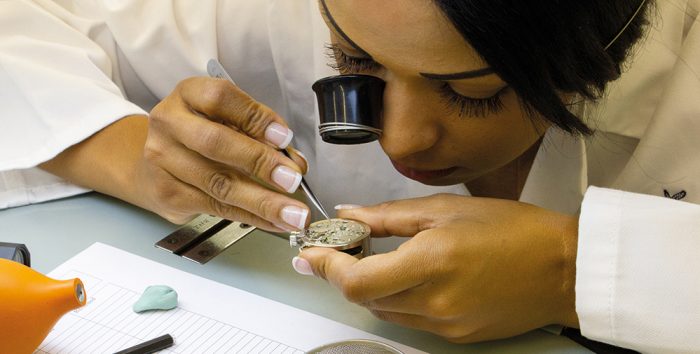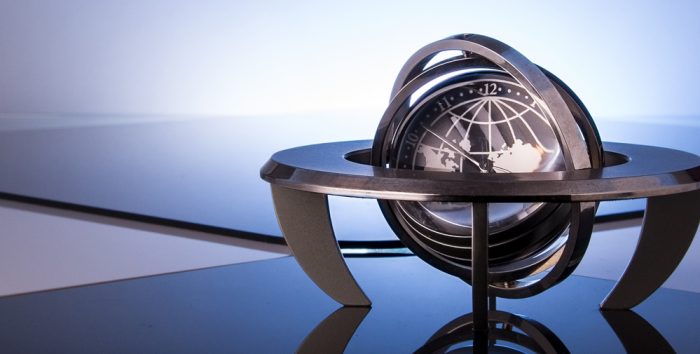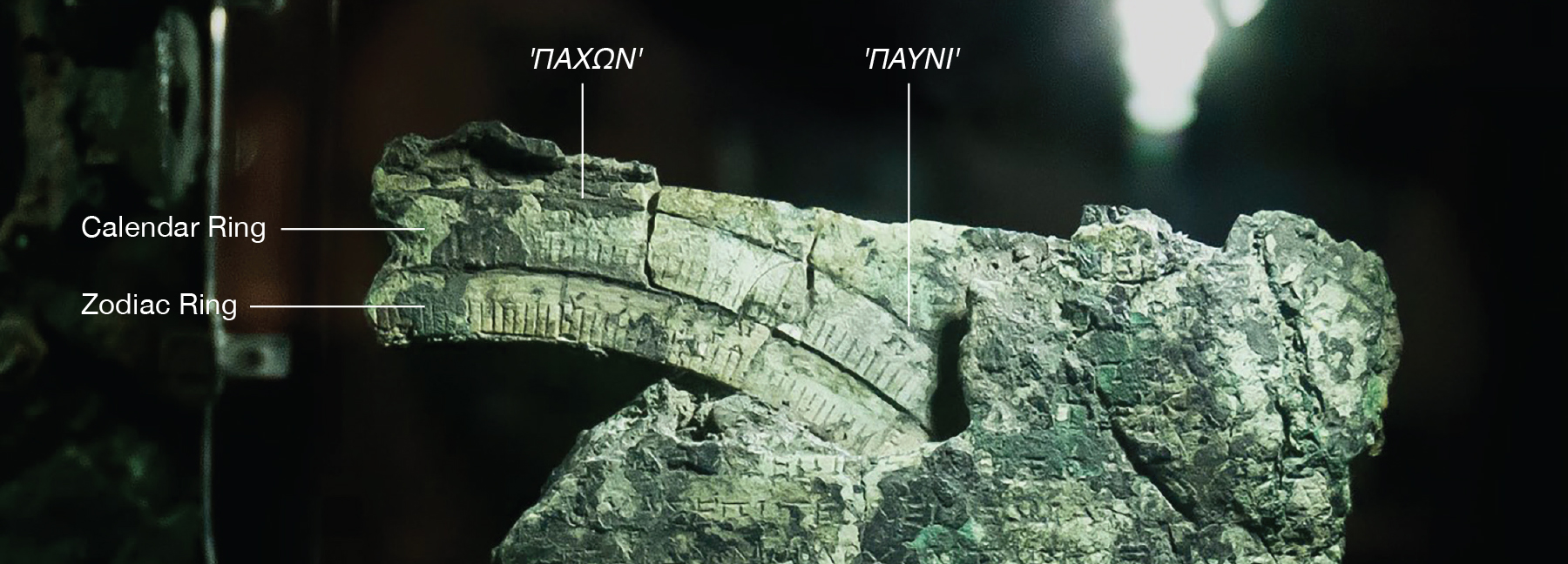Antikythera Mechanism
Evidence of a Lunar Calendar, parts 1 and 2
C. Budiselic, A. T. Thoeni, M. Dubno, A. T. Ramsey
Published: 5 December, 2020
Image used with permission, copyright 2019, David Jones
Download Antikythera Mechanism Full Paper
New analysis of the Antikythera Mechanism presents evidence that the mechanism’s front-dial ring is a 354-day lunar calendar, not a 365-day calendar as previously supposed.
The importance of the Antikythera Mechanism has been recognised since nearly the moment of its discovery on the Mediterranean Sea floor in 1901. It is a complex mechanical computer that could be used to predict, amongst other things, solar and lunar motions and their eclipses. It links the craft of the clockmaker all the way back to the origins of mechanical devices 2100 years ago.
Scholars including Derek de Solla Price, Tony Freeth, Alexander Jones, Michael Wright, and Mike Edmunds have expanded our understanding of this device. The authors of this paper based their work on a new statistical analysis of the hole-spacing in the front calendar ring, combined with practical insights gained by experience in construction of traditional clocks and reconstruction of mechanisms from antiquity.
The peer-reviewed Horological Journal is published by the British Horological Institute since 1858, and brings together the diverse disciplines of horology, including practical, historic, aesthetic and market-based studies in clocks, watches and related subjects. This digital edition of ‘The Antikythera Mechanism – Evidence of a Lunar Calendar’ is a pre-press version, published in December 2020. The print edition (with minor revisions) has been published in the March 2021 edition of the Horological Journal.
Synopsis
Among the Mechanism’s many features is a movable calendar ring with three Egyptian month names engraved in ancient Greek. The calendar ring has been universally supposed, without validation, to be an unremarkable example of what is generally referred to as the ‘Egyptian civil calendar’ — a non-lunar calendar of precisely 365-day duration, comprising twelve 30-day months, plus five epagomenal or ‘intercalary’ days.
In this paper we reconsider this feature, and provide new data to show this interpretation to be incorrect, and displace the century-long assumption of a 365-day calendar on the Antikythera Mechanism, proposing instead that it is a 354-day lunar calendar.
The underlying hole-measurement data can be downloaded here: https://dataverse.harvard.edu/dataset.xhtml?persistentId=doi:10.7910/DVN/VJGLVS

Join the BHI
As a member of the BHI you automatically receive the HJ every month as well as gaining access to the complete digital back-catalogue of 160 years of the HJ. In addition to this, other membership benefits include:
- Access to training and education short and distance learning courses with the option to sit accredited examinations that lead to recognised professional horological qualifications
- Access to the Members’ Forum – a place to discuss and research all topics relating to horology

BHI Distance Learning Courses
Whether you want to become a professional horologist or learn for personal enjoyment, our distance learning courses in watchmaking and clockmaking are for you. You can learn at your own pace wherever it suits you and we also run on-site courses to support your learning.
Find out more
Write for the HJ
Would you like to write for The Horological Journal (HJ)? We welcome industry news and submissions of a technical nature on clocks and watches, modern and antiquarian, as well as general interest articles on other horological subjects. For more details or for an informal chat, please contact our Editor Rachel Reeves on +44(0)1636 817602 or email rachel@bhi.co.uk.
Find out more

Advertise in the HJ
With an advert in The Horological Journal (HJ) you reach an audience of thousands of people who make, repair, restore, collect and sell clocks, watches and other timepieces – in the UK as well as abroad. The HJ is also read by many others who are interested in timekeeping and timepieces. In addition, it goes to industry leaders, policy makers, academics and students.
You could not wish for a more interested and captivated audience for your message.
Find out more
